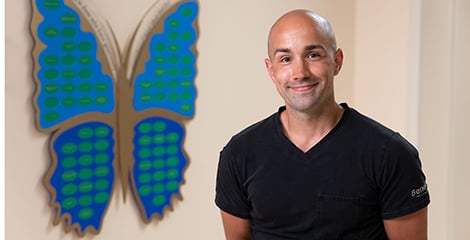Burn Care Education
What is a Burn?
A burn injury is the destruction of the different layers of the skin and the structures within the skin, such as sweat glands, oil glands, and hair follicles. Heat generated from the fire or heat source and the amount of time the skin is exposed to the heat is what damages the skin. The depth of injury is described as a first, second, and third-degree burn.
- Stop, Drop, Roll
- Cool the burn area with cool water. DO NOT USE ICE.
- Remove non-sticking burned clothing.
- Cover the burn with a clean, dry bandage.
- Keep the person warm.
- Remove jewelry, tight clothes, belts, and shoes.
- Do not break blisters.
- Do not use creams or butter.
- Seek medical attention immediately.
- Remove hot, wet clothes.
- Cool the burn area with cool water. DO NOT USE ICE.
- Cover the burn with a clean, dry dressing.
- Keep the person warm.
- Do not use creams or butter.
- Do not break blisters.
- Seek medical attention immediately.
- Cool the burn area with cool water. DO NOT USE ICE.
- Cover the burn with a clean, dry dressing.
- Keep the person warm.
- Do not use creams or butter.
- Do not break blisters.
- Seek medical attention immediately.
- DO NOT TOUCH a person in contact with electricity. Injury could result.
- Call 911.
- Disconnect the source of power or call the power company.
- After the power is off, provide medical assistance.
- Begin CPR if needed. (Is the person breathing? Does the person have a heart beat?)
- Look for other injuries.
- Cool the burn area with cool water. DO NOT USE ICE.
- Cover the burn with a clean, dry dressing.
- Keep the person warm.
- Do not use creams or butter.
- Call 911.
- Remove the chemical causing the burn while protecting yourself. For dry chemicals, brush off any remaining material. Wear gloves or use a towel or other suitable object, such as a brush.
- Remove contaminated clothing or jewelry to prevent further burning.
- Cool the burn area with cool water. DO NOT USE ICE.
- Cover the burn with a loose, clean, dry dressing.
- Keep the person warm.
- Do not use creams or butter.
Fire Escape Tips
Have a plan:
- Have a set location outside the house and instruct the entire family to meet there in case of a fire.
- Know at least two ways out of a room.
- Make sure smoke detectors are working properly.
- Have fire drills.
- Have a plan to assist people who cannot escape on their own.
- Sleep with the bedroom door closed. (This provides additional time to escape a fire.)
If there is a fire:
- Think, don't panic, in a fire.
- Never waste time getting dressed or gathering valuables.
- Touch the door before opening. If it is warm to the touch, do not open the door. Find an alternate way out.
- If there is smoke, drop to the floor and crawl. Keep your head 1 to 2 feet from the floor. One breath of smoke can cause confusion and disorientation.
- If you can escape through a window, hang from it, then drop to the ground. Do not jump.
- Make sure everyone is out of the house.
- Call the fire department (911) once you are out of the house or building. Inform the fire personnel of any person or pet that is still in the house.
- Never go back into a burning building. Leave the firefighting to the professionals.
Contact Information
If you are an outside facility, fire department, or EMS seeking further education on burn care and treatment, please contact:
Andrew Neading, BSN, RN
Burn Program Coordinator
216-778-3773